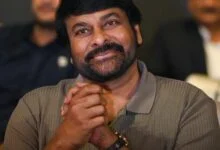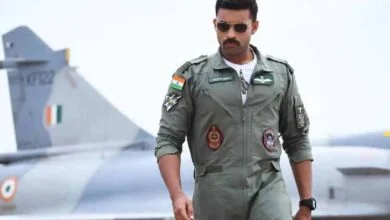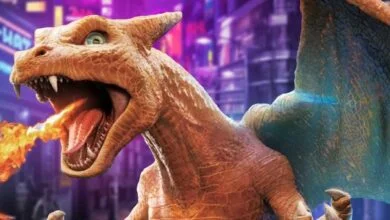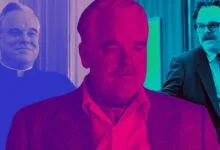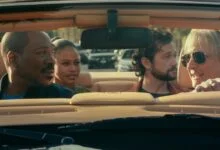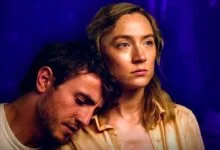Chris Jericho of AEW Discusses His Wrestling Documentary The Death Tour
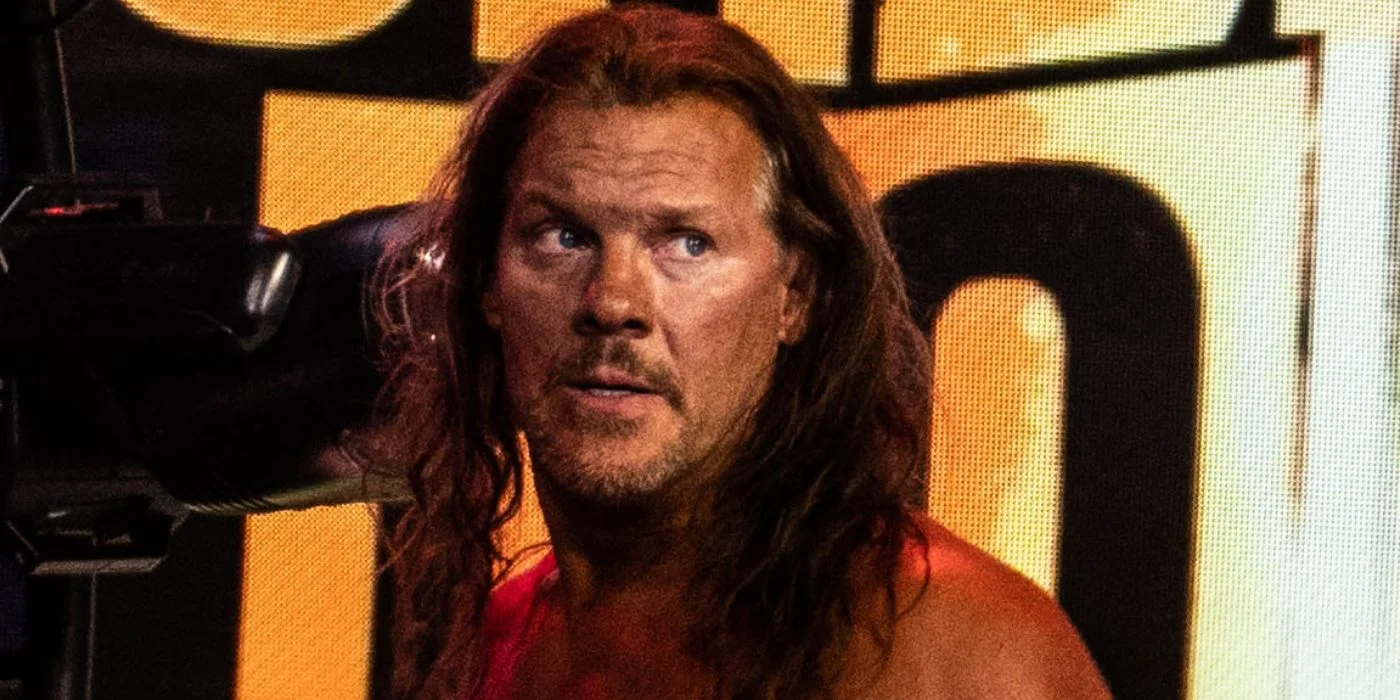
In the world of professional wresting, athletes criss-cross the globe putting on shows for thousands of people. From Wembley Stadium in London, to Madison Square Garden in New York City, the entertainment these performers provide for the masses is second to none. However, it’s very rare that wrestlers start at the top. Hundreds, if not thousands, of independent wrestlers that aren’t signed to a big organization like WWE or AEW are performing right now in armories, bars, and high school gymnasiums in front of less than 100 people, hoping for their big break while participating in one of these smaller tours.
The Death Tour is just one of many of these small tours that independent wrestlers participate in, but the thing that separates it from the rest, and really makes it stand out, is that this tour doesn’t take place in the usual environment. As a staple in Canadian wrestling, The Death Tour has been going on for 50 years, and takes place during the winter in the frozen tundra of Manitoba, Canada. Its promotor, Tony Condello, brings professional wrestling to the indigenous people of Canada, who otherwise might not get to see a wrestling event.
It’s this tour that is the subject and title of a new documentary by directors Stephan Peterson, Sonya Ballantyne, and executive producer, Chris Jericho, a Canadian wrestling icon who participated in The Death Tour when he was first starting out. MovieWeb recently got the chance to sit down with Jericho and discuss the new film, which made its world premiere at the Slamdance Film Festival in Park City, Utah, on January 19.
Chris Jericho Goes on The Death Tour
Chris Jericho is no stranger to the film and TV world. He’s appeared as an actor in such films as MacGruber, Sharknado 3, Jay and Silent Bob Reboot, and Terrifier 2, and his production credits include the documentary I’m Too Old for This Sh*t: A Heavy Metal Fairy Tale. The 53-year-old star spoke about how he got involved in The Death Tour documentary, and why he wanted to tell this story. He said not only is something like this important for a young professional wrestler, but for the Indigenous communities they visit:
“When the idea came to me to help produce this documentary, I was very much interested in it, because I know how important this tour is to a young pro wrestler. Also how important these tours are to the [First Nations] communities that they go to in northern Manitoba. So, to me, it would just seem like a no-brainer to be a very interesting story that we can tell.”
Jericho went on to say that another thing that appealed to him was how The Death Tour documentary unfolded. Unlike other wrestling documentaries that might focus on an individual, and have a beginning, middle, and end to their story, The Death Tour is laid out so that you don’t know what’s going to happen next. He was attracted to the concept, and once filming got underway, he was even more excited to see it come together.
“There are two types of documentaries. There’s one where the story has already been told; like if you want to make a documentary about John Lennon, for example, his story is beginning, middle, end. We know he’s dead. He’s gone. This was a documentary that unfolds as we film, and that very much appealed to me as well, because you don’t know what you’re going to get,” said Jericho, who summed it up this way:
We’re going to do a documentary. We’re going to film for two weeks starting next Tuesday. What’s going to happen? We don’t know. And that was very interesting to me as well. So the whole concept of the documentary was interesting. And then to see what we got once we started filming made things even more exciting.
What Is The Death Tour?
Every winter, a select handful of independent wrestlers join promotor Tony Condello on The Death Tour, traveling across frozen lakes in Manitoba to bring entertainment to the Indigenous population of Canada. Jericho laid out just what that entails, and what these performers go through each winter during the tour. He said that at times, the whole experience can be terrifying:
“The reason why we always call it [The Death Tour] is it’s very grueling. And the reason why it’s grueling is you’re going up to northern Manitoba in the winter. You’re dealing with minus 30, minus 40 temperatures. You’re traveling over frozen lakes to get to the reservations, and those frozen lakes sometimes aren’t as frozen as you want them to be.”
“A lot of times, there’s eight hour drives, 10 hour drives, 15 hour drives,” continued Jericho. “You could get to these reservations, and if there’s a death on the reservation, which happens quite often, as we know from watching this film, then the show’s canceled, and you’ll find that out five minutes within getting there. If the show is on, you wrestle in basically a high school gymnasium, and you sleep in there as well. There’s a lot of time spent in vans where you’re kind of scared to even be traveling in these areas. When you hear the ice cracking when you’re driving over it…it’s terrifying”
Jericho also talked about how The Death Tour affects the wrestlers involved, and how it acts as a way for them to prove to themselves that they have what it takes to succeed in the pro wrestling world:
“You sleep on the floor in a sleeping bag that you bring with you. Food you have to buy from the reservation, which, if you’re looking for a jar of peanut butter, could cost $40. So it’s really kind of an interesting way to see, ‘Do I have what it takes to be in the wrestling business, not just in the ring, but out of the ring?’ And that’s where The Death Tour monitor came from. You could call it The Grueling Tour, or you can call it The Not-Easy Tour. You can call it The Stand and Deliver tour. The Death Tour just sounds much better.”
The Death Tour’s Meaning to Indigenous Communities
For some First Nations people of Canada, life can seem like a never-ending cycle of despair. Cut off from the rest of the population and major cities, these Indigenous communities struggle with things like massive socioeconomic disparity and addiction on a day-to-day basis. The suicide rate among First Nations people is three times that of the national average, proving that life is more difficult for them than in any other part of the country. Something like The Death Tour provides a much-needed escape from their daily lives, and is a worthwhile endeavor for all involved.
“Another thing that really came to be that we never expected when we first started is how influential The Death Tour is to the community, to the kids that come to the shows, the people that come to the shows, because these are very depressing areas, lots and lots of suicides,” explained Jericho, adding:
So when they find out that the show is coming to town, maybe that gives them two or three months to have something to look forward to. It really is very inspirational. You could call it The Life Tour.
Jericho also touched on what something like The Death Tour means for the performers, and what they, as people, mean to the kids that get to come and see the shows. He believes that, in the end, the grueling aspect of the tour is worth it, and that there is nothing like it in professional wrestling:
“It’s all worth it in the end, because when they do the match, they get to be the stars, and the people watching get to see the stars. And it just all works together. It really is a part of pro wrestling that nobody ever sees…there’s no other Death Tour. There’s nothing like this in the States. There’s nothing like this in Mexico. It’s only in Manitoba, Canada, and when Tony Condello passes away, it might never happen again. It’s been years of doing this, and Tony still does it at 80-years-old because he loves it.”
How Slamdance Is Crucial for The Death Tour Documentary
Every year, the Slamdance Film Festival gives emerging artists the chance to showcase their work. The 2024 festival kicked off on January 19 in Park City, Utah, and for The Death Tour director, Stephan Peterson, co-director Sonya Ballantyne, and executive producer, Chris Jericho, being accepted to Slamdance is a big step in bringing the documentary to the masses. Jericho said he is honored to be among the participants, and that the experience of watching his own film in front of a crowd of people will certainly be a nerve-wracking one:
“When you do a documentary, there’s a couple of different ways of going about trying to get people to know about it. And when you do the film festival route, it’s hard. I heard there were like 5000 movies submitted, and ours was one of them. So it’s a big honor to be here at Slamdance. I’m really excited because we’re gonna sit there and watch the premiere in a theater, and I don’t know if there’s gonna be 500 people there, or five, but either way, it’s going to be nerve-wracking to be watching our movie with people that have never seen it.”
“And you’re hoping for the big standing ovation and confetti dropping from the ceiling. That’s all fine and dandy. We know we made a great movie, and it’s great to be able to premiere it here. Slamdance is such a prestigious festival,” added Jericho.
The Death Tour had its first showing at the Slamdance Film Festival in Park City, Utah on January 19, and will be screened again on Monday, January 22. While there’s no word yet on when the documentary might receive a theatrical or VOD release, congratulations are nonetheless owed to Stephan Peterson, Sonya Ballantyne, Chris Jericho and the performers involved for creating a heartfelt film that’s not so much about wrestling as it is hope and the human condition.


